 |
| July 20, 2021 | Volume 17 Issue 27 |
Motion Control News & Products
Designfax weekly eMagazine
Archives
Partners
Manufacturing Center
Product Spotlight
Modern Applications News
Metalworking Ideas For
Today's Job Shops
Tooling and Production
Strategies for large
metalworking plants
Robots think and act on the fly at moving assembly line speeds
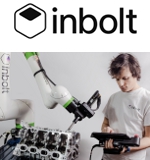 Inbolt and FANUC are launching a manufacturing breakthrough enabling FANUC robots to tackle one of the most complex automation challenges: performing production tasks on continuously moving parts at line speeds. With Inbolt's AI-powered 3D vision, manufacturers can now automate screw insertion, bolt rundown, glue application, and other high-precision tasks on parts moving down the line without costly infrastructure investments or cycle time compromises.
Inbolt and FANUC are launching a manufacturing breakthrough enabling FANUC robots to tackle one of the most complex automation challenges: performing production tasks on continuously moving parts at line speeds. With Inbolt's AI-powered 3D vision, manufacturers can now automate screw insertion, bolt rundown, glue application, and other high-precision tasks on parts moving down the line without costly infrastructure investments or cycle time compromises.
Learn more.
Best high-speed rotary bearing in THK history
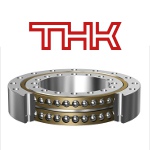 THK has developed its best-performing, high-speed rotary bearing ever: the High-Speed, Double-Row Angular Contact Ring BWH. This rotary bearing has balls aligned inside a cage between the inner and outer rings and is part of the THK Rotary Series, along with the cross-roller ring. The main features of this product are its ability to receive loads in all directions as well as its high rigidity and rotational accuracy, which are equal to that of cross-roller rings. By adopting a new structure to change the rolling elements from rollers to balls, this product achieves the greatest high-speed performance ever offered by THK.
THK has developed its best-performing, high-speed rotary bearing ever: the High-Speed, Double-Row Angular Contact Ring BWH. This rotary bearing has balls aligned inside a cage between the inner and outer rings and is part of the THK Rotary Series, along with the cross-roller ring. The main features of this product are its ability to receive loads in all directions as well as its high rigidity and rotational accuracy, which are equal to that of cross-roller rings. By adopting a new structure to change the rolling elements from rollers to balls, this product achieves the greatest high-speed performance ever offered by THK.
Learn more.
Elevating tables: Precise vertical positioning in tight spaces
 As semicon-ductors and optical components become smaller and more sophisticated, the TZ Series of precision elevating tables from IKO International provides exceptional vertical positioning accuracy in a compact size. This unit features a unique wedge mechanism guided in the vertical direction by a pair of IKO C-Lube Super MX linear motion rolling guides arranged in parallel to achieve highly precise positioning with exceptional rigidity. An optional linear encoder provides full closed loop control to achieve positioning accuracy as high as 0.005 mm, with repeatability of +/-0.001 mm.
As semicon-ductors and optical components become smaller and more sophisticated, the TZ Series of precision elevating tables from IKO International provides exceptional vertical positioning accuracy in a compact size. This unit features a unique wedge mechanism guided in the vertical direction by a pair of IKO C-Lube Super MX linear motion rolling guides arranged in parallel to achieve highly precise positioning with exceptional rigidity. An optional linear encoder provides full closed loop control to achieve positioning accuracy as high as 0.005 mm, with repeatability of +/-0.001 mm.
Learn more and get all the specs.
This cobot is all about safety around people
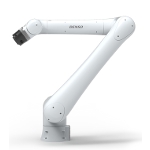 The COBOTTA PRO from DENSO Robotics is a lightweight, high-speed collaborative robot designed for communication between workers and robots while maximizing productivity. It delivers a blend of productivity and safety for both simple tasks and multi-step processes like assembly and inspection work. The 6-axis unit operates at speeds up to 2,500 mm per sec when no workers are near and slows or stops when people approach. Two models available: PRO 900 (max payload 6 kg) and PRO 1300 (max payload 12 kg). Many more functions and features.
The COBOTTA PRO from DENSO Robotics is a lightweight, high-speed collaborative robot designed for communication between workers and robots while maximizing productivity. It delivers a blend of productivity and safety for both simple tasks and multi-step processes like assembly and inspection work. The 6-axis unit operates at speeds up to 2,500 mm per sec when no workers are near and slows or stops when people approach. Two models available: PRO 900 (max payload 6 kg) and PRO 1300 (max payload 12 kg). Many more functions and features.
Learn more.
Powerful, pull-type clapper solenoids handle myriad jobs
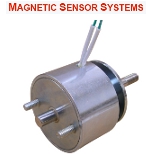 New powerful, low-profile, pull-type clapper solenoids are available from Magnetic Sensor Systems (MSS). Applications include valve control, locks, starters, ventilators, clamping, sorting, appliances, tools, HVAC, brakes, clutches, switches, mixing, fire suppression systems, door controls, detent latches, and more. The S-16-264 Series of 17 Pull-Type Clapper Solenoids have ampere turns (windings) adjusted to meet the specific force and duty cycle requirements of your application. They provide up to 130 lb (578 N) of force.
New powerful, low-profile, pull-type clapper solenoids are available from Magnetic Sensor Systems (MSS). Applications include valve control, locks, starters, ventilators, clamping, sorting, appliances, tools, HVAC, brakes, clutches, switches, mixing, fire suppression systems, door controls, detent latches, and more. The S-16-264 Series of 17 Pull-Type Clapper Solenoids have ampere turns (windings) adjusted to meet the specific force and duty cycle requirements of your application. They provide up to 130 lb (578 N) of force.
Get all the specs for these solenoids and other options.
Tech Tip: Belt, screw, or chain-driven actuator?
 Bishop-Wisecarver provides a quick, very useful guide to help you evaluate the right drive strategy for your system: belt, screw, or chain-driven actuator. Each drive type has unique advantages and limitations, so evaluating all your options will help you find the most suitable actuator setup for your specific application needs.
Bishop-Wisecarver provides a quick, very useful guide to help you evaluate the right drive strategy for your system: belt, screw, or chain-driven actuator. Each drive type has unique advantages and limitations, so evaluating all your options will help you find the most suitable actuator setup for your specific application needs.
Read the Bishop-Wisecarver blog.
Ultra-precise linear stage -- down to 0.005 microns
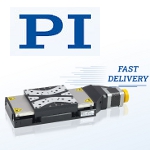 PI, a global leader in precision motion control and nanoposi-tioning, now offers fast delivery of the L-511 linear micropositioning stage, which is designed for applications requiring minimum incremental motion down to 20 nm, drive forces up to 22 lb, and multi-axis configuration options. The L-511 can be combined to form XY or XYZ motion systems and integrated with rotary stages. A variety of drive and encoder options (stepper and servo motors, rotary, and linear encoders) enable ultra-fine sensitivity. Applications include: metrology, laser processing, semiconductors, biotech, optical alignment, and advanced automation.
PI, a global leader in precision motion control and nanoposi-tioning, now offers fast delivery of the L-511 linear micropositioning stage, which is designed for applications requiring minimum incremental motion down to 20 nm, drive forces up to 22 lb, and multi-axis configuration options. The L-511 can be combined to form XY or XYZ motion systems and integrated with rotary stages. A variety of drive and encoder options (stepper and servo motors, rotary, and linear encoders) enable ultra-fine sensitivity. Applications include: metrology, laser processing, semiconductors, biotech, optical alignment, and advanced automation.
Learn more and get all the specs.
Choosing the right stepper motor: PM or hybrid?
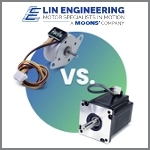 According to the experts at Lin Engineering, there are two primary types of stepper motors to consider: permanent magnet (PM) and hybrid. But which is right for your application? Both types have their advantages and disadvantages, and the choice ultimately depends on your specific requirements.
According to the experts at Lin Engineering, there are two primary types of stepper motors to consider: permanent magnet (PM) and hybrid. But which is right for your application? Both types have their advantages and disadvantages, and the choice ultimately depends on your specific requirements.
Read this informative Lin Engineering article.
New PTFE-free linear guide for precise positioning
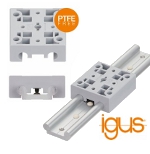 The new drylin WWP linear guide from igus features a PTFE-free locking carriage. Engineered from lubrication-free, high-performance polymers and aluminum, the guide offers a lightweight, hygienic, and low-maintenance alternative to complex mechanical and electronic adjustment systems. It is significantly more compact and lightweight than conventional recirculating ball-bearing systems. Applications include interior components in vehicles, aircraft, and furniture.
The new drylin WWP linear guide from igus features a PTFE-free locking carriage. Engineered from lubrication-free, high-performance polymers and aluminum, the guide offers a lightweight, hygienic, and low-maintenance alternative to complex mechanical and electronic adjustment systems. It is significantly more compact and lightweight than conventional recirculating ball-bearing systems. Applications include interior components in vehicles, aircraft, and furniture.
Learn more and get all the specs.
Heavy-duty gear units for mixing and agitating systems
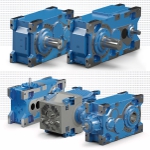 MAXXDRIVE industrial gear units from NORD DRIVE-SYSTEMS are an established drive solution for heavy-duty applications. In addition to conveying, lifting, and driving, they also play an important role in mixing and agitating systems. MAXXDRIVE units feature a compact, one-piece UNICASE housing that delivers long service life, easy maintenance, and quiet operation. Their robust design handles high axial and radial loads, achieves output torques up to 2,495,900 lb-in., and powers up to 8,075 hp.
MAXXDRIVE industrial gear units from NORD DRIVE-SYSTEMS are an established drive solution for heavy-duty applications. In addition to conveying, lifting, and driving, they also play an important role in mixing and agitating systems. MAXXDRIVE units feature a compact, one-piece UNICASE housing that delivers long service life, easy maintenance, and quiet operation. Their robust design handles high axial and radial loads, achieves output torques up to 2,495,900 lb-in., and powers up to 8,075 hp.
Learn more.
What are non-captive linear actuators?
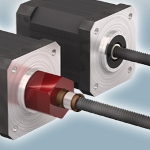 According to PBC Linear, their new non-captive linear actuators are different from the more common external versions of lead screw-driven linear actuators because they allow the lead screw to completely pass through the motor. This fundamental difference offers advantages for designs that have limited space available or for engineers looking to shrink the overall size of their design package.
According to PBC Linear, their new non-captive linear actuators are different from the more common external versions of lead screw-driven linear actuators because they allow the lead screw to completely pass through the motor. This fundamental difference offers advantages for designs that have limited space available or for engineers looking to shrink the overall size of their design package.
Read the full PBC Linear blog.
Güdel introduces Swiss-quality tracks for cobots
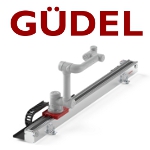 Güdel Inc. is highlighting new technologies at Automate 2025 booth #2418 that demonstrate its unmatched ability to solve automation engineering challenges. One is the Cobomover, a 7th-axis linear track purpose-built for collaborative and lightweight robots. Designed and manufactured in Switzerland, this unit extends the working range of robots up to 5 m, allowing them to operate multiple workstations and perform a variety of tasks without manual repositioning. Compatible with over 60 cobots and small traditional robots.
Güdel Inc. is highlighting new technologies at Automate 2025 booth #2418 that demonstrate its unmatched ability to solve automation engineering challenges. One is the Cobomover, a 7th-axis linear track purpose-built for collaborative and lightweight robots. Designed and manufactured in Switzerland, this unit extends the working range of robots up to 5 m, allowing them to operate multiple workstations and perform a variety of tasks without manual repositioning. Compatible with over 60 cobots and small traditional robots.
Learn more and get all the specs.
New open-center XYZ stage
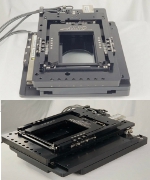 ThruSight-Focus is a high-performance, compact motion platform specifically engineered for applications requiring dual-side access to the sample or workpiece. It pairs ALIO's monolithic open-center XY stage -- known for its nanometer-level precision, crossed roller bearings, and direct linear drives -- with a novel Z-wedge mechanism that converts horizontal drive force into vertical motion via direct drive. This innovative architecture eliminates backlash, enhances servo responsiveness, and delivers fast, stable Z-axis movements -- all within a low-profile footprint.
ThruSight-Focus is a high-performance, compact motion platform specifically engineered for applications requiring dual-side access to the sample or workpiece. It pairs ALIO's monolithic open-center XY stage -- known for its nanometer-level precision, crossed roller bearings, and direct linear drives -- with a novel Z-wedge mechanism that converts horizontal drive force into vertical motion via direct drive. This innovative architecture eliminates backlash, enhances servo responsiveness, and delivers fast, stable Z-axis movements -- all within a low-profile footprint.
Learn more.
Eaton unveils differential engineered for EVs
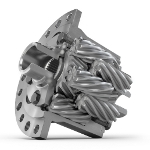 Intelligent power management company Eaton launched a new differential engineered specifically for electric vehicles at Auto Shanghai 2025 in China. The innovative design addresses the unique challenges presented by EV propulsion systems, including shared low-viscosity oil environments, increased sensitivity to noise, and the demands of high and instant torque delivery.
Intelligent power management company Eaton launched a new differential engineered specifically for electric vehicles at Auto Shanghai 2025 in China. The innovative design addresses the unique challenges presented by EV propulsion systems, including shared low-viscosity oil environments, increased sensitivity to noise, and the demands of high and instant torque delivery.
Read the full article.
Top Product: Integrated servo system is 20% smaller than standalone unit
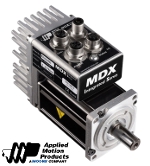 Applied Motion Products has introduced the MDX+ series, a family of low-voltage servo systems that integrate a servo drive, motor, and encoder into one package. This all-in-one drive is an ideal solution for manufacturers in logistics, AGV, medical, semiconductor, the solar industries, and many others.
Applied Motion Products has introduced the MDX+ series, a family of low-voltage servo systems that integrate a servo drive, motor, and encoder into one package. This all-in-one drive is an ideal solution for manufacturers in logistics, AGV, medical, semiconductor, the solar industries, and many others.
Read the full article.
Army testing Robotic Combat Vehicle in Michigan -- silent watch and stealth-like capabilities
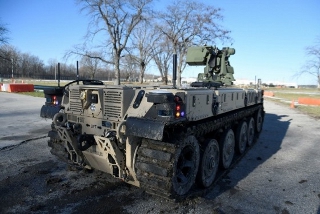
The Robotic Combat Vehicle-Light (RCV-L) experimental prototype is a small, lightweight hybrid-electric unmanned ground combat vehicle that can be transported easily by military aircraft. Its highly versatile common architecture and modular payload features offer a scalable continuum of capabilities that can be adapted to new and emerging threats well into the future. [Photo Credit: Bruce Huffman]
By Bruce Huffman, Michigan National Guard
In late 2020, four Robotic Combat Vehicle - Light (RCV-L) experimental prototypes were delivered to Selfridge Air National Guard Base (SANGB) in Michigan, where engineers from the U.S. Army Combat Capabilities Development Command's Ground Vehicle Systems Center (GVSC) began integrating software and hardware to conduct Manned/Unmanned - Teaming (MUM-T) testing. GVSC engineers will conduct maneuver testing on the RCV-L prototypes at Camp Grayling throughout 2021 to help determine the feasibility of integrating unmanned systems into ground combat vehicle formations.
Large-scale combat maneuver tests are routinely conducted at Camp Grayling, a 148,000-acre training area in northern Michigan with a variety of multi-use ranges and maneuver courses able to accommodate air-to-ground live fires, artillery, tanks, mortars, and small arms.
"GVSC leverages the facilities at Camp Grayling, which provides the perfect location to test a wide range of robotic combat systems in different terrains," said Kevin Mills, associate director for Ground Vehicle Robotics at GVSC. "Camp Grayling gives our engineers and industry partners numerous options to explore the full performance capabilities of next-generation unmanned ground systems in our own backyard. Grayling's extremely challenging off-road terrain and vast, secure live-fire test areas allow us to push experimental prototypes to their limits and safely evaluate weapons systems on combat robotics."
Army Maj. Gen. Paul D. Rogers, adjutant general and Department of Military and Veterans Affairs director, said the relationship between the military and the defense industrial base in southeast Michigan dates back to World War II.
"These partnerships, combined with the unique geography of northern Michigan and our high-tech infrastructure and expertise, make Michigan an ideal proving ground for new technologies like the RCV-L prototype," Rogers said.
At Northern Strike 20, the Michigan National Guard's annual joint reserve component readiness exercise held in Northern Michigan, both U.S. and Latvian Joint Terminal Attack Controllers (JTAC) collaborated with industry to demonstrate a new Android Tactical Awareness Kit that uses cellular technology instead of Wi-Fi. According to Air Force Master Sgt. Patricia Boyer, a Michigan National Guard cyber operations specialist, the new technology significantly improved communications, data, and video transmissions from above the battlefield, providing enhanced real-time situational awareness.
"We're trying to build a mobile innovative capability to solve problems in real time," said Air Force Brig. Gen. Bryan Teff, assistant adjutant general for air and commander of the Michigan Air National Guard. "Our aim is to demonstrate this during Northern Strike 21 and future iterations of the exercise."
The Michigan National Guard unveiled its National All-Domain Warfighting Center (NADWC) at Camp Grayling during Northern Strike 20 in July 2020. The NADWC includes a 17,000-square-mile special-use airspace that extends over a portion of Lake Huron. This airspace is the nexus between the NADWC's four supporting bases: Camp Grayling, the Alpena Combat Readiness Training Center, Battle Creek Air National Guard Base, and SANGB.
This support network allows the NADWC to offer unique, all-domain training and testing not typically available at a single location in the Midwest. In addition to the robust ground combat capabilities at Camp Grayling, the NADWC leverages the support of these bases to offer air-to-sea live fires, littoral operations, bombers, fighters, refueling, cargo, and unmanned systems, as well as cyber, surveillance, intelligence, reconnaissance, and Joint All-Domain Command and Control (JADC2) operations.
Evaluating lessons learned in Iraq and Afghanistan, the Department of Defense's Long-Range Research and Development Planning Program (LRRDPP) and the Army Science Board have determined that advanced autonomy-enabled technologies will play a significant role in keeping Soldiers safe and that a mix of manned/unmanned vehicles could prove instrumental in winning future conflicts against peer and near-peer adversaries.
Leveraging lessons learned testing the Expeditionary Modular Autonomous Vehicles (EMAV) that Pratt & Miller built for the Marine Corps, the RCV-L experimental prototype is built to help the Army conduct live Soldier experimentation with unmanned combat vehicles to better define how MUM-T operation will shape future warfare. Its highly versatile common architecture and modular payload features offer a scalable continuum of capabilities that can be adapted to new threats well into the future.
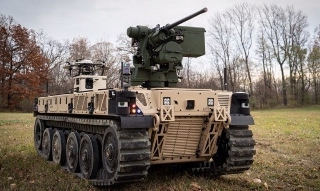
The RCV-L can be equipped with a Tethered Unmanned Aerial System, a small drone that can be deployed to conduct aerial reconnaissance while the vehicle is at a safe distance. Other equipment to be tested on the RCV-L experimental prototype includes the M153 Common Remotely Operated Weapons Station II (CROWS II), the .50-caliber M2 machine gun, and the 40-mm MK19 Mod 3 automatic grenade launcher. [Photo Credit: U.S. Army]
The RCV-L prototype is compact and lightweight and can be transported easily by military aircraft to remote locations. Its hybrid/diesel generator powers high-voltage batteries that provide a silent watch and stealth-like capabilities. It features high-resolution cameras, sensors, and navigation equipment, and its modular platform can accommodate up to 7,000 lb.
It can be equipped with a Tethered Unmanned Aerial System, a small drone that can deploy to conduct aerial reconnaissance while the vehicle is at a safe distance. Other equipment to be tested on the RCV-L experimental prototype includes the M153 Common Remotely Operated Weapons Station II (CROWS II), the .50-caliber M2 machine gun, and the 40-mm MK19 Mod 3 automatic grenade launcher.
Laurent Lannibois, QinetiQ's RCV program manager, said the vehicle can be remotely controlled by a human operator or can function semi-autonomously along known/programmed routes. The Army is improving the RCV-L's semi-autonomous and unmanned/autonomous capabilities.
"We don't know exactly what the future holds, but the Michigan National Guard is working closely with the research and development community to enable combat formations and unburden our Soldiers," said Rogers.
Rogers said autonomy-enabled systems will augment warfighter capabilities and increase battlefield mobility and lethality by creating greater distances from danger, making supply distribution safer and more efficient, and providing the flexibility to adapt to tomorrow's ever-changing and evolving threats.
"Nothing can replace the life of a Soldier," said Rogers. "Autonomy-enabled systems will help make us more expeditionary, keep the warfighter safe, and make them more efficient."
Published February 2021
Rate this article
View our terms of use and privacy policy

